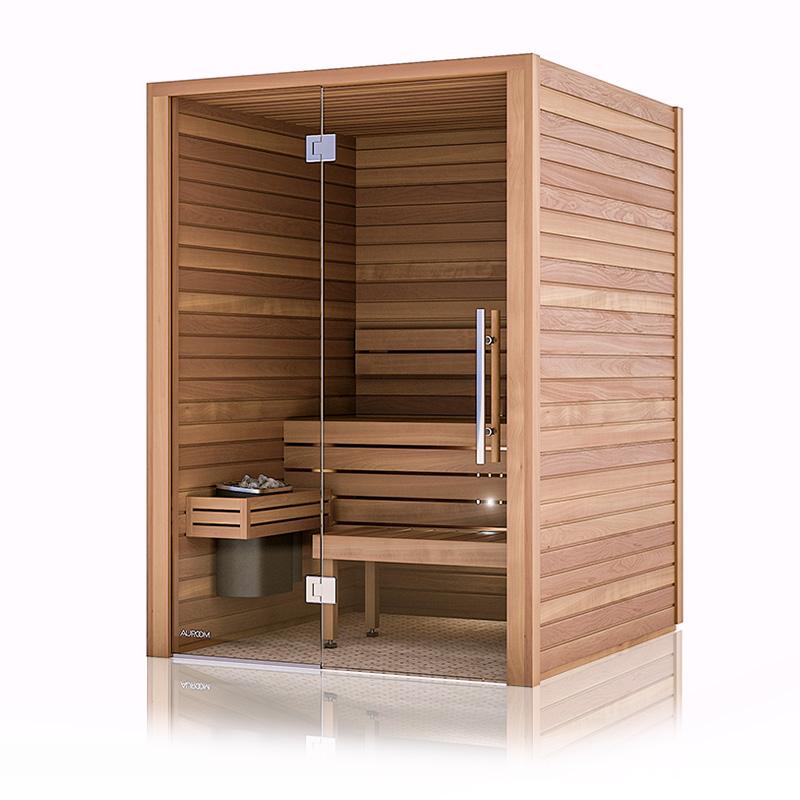How Traditional Sauna can Save You Time, Stress, and Money.
Traditional Sauna for Beginners
Table of Contents7 Easy Facts About Traditional Sauna DescribedThe Single Strategy To Use For Traditional SaunaExcitement About Traditional SaunaSee This Report on Traditional SaunaThings about Traditional Sauna
Energy savings is one point to consider for individuals that plan on utilizing their sauna frequently. For a traditional sauna, bathers typically require to await 30-40 minutes for the space to pre-heat prior to entering. Infrared saunas, on the various other hand, commonly reach their excellent temperature in about 15 mins.That suggests that in an infrared sauna, bathers can begin appreciating their sauna instantly. One distinction between the two kinds of sauna that is typically forgotten is the social experience. Traditional saunas are typically big enough to fit several individuals and permit socializing. Infrared saunas are normally smaller sized in size, supplying more of a personal escape and less of a social experience.

Try a sauna today and uncover a few of the amazing benefits for yourself!.
A Biased View of Traditional Sauna

Aspects such as warm resistance, wanted degree of detoxing, and overall health ought to be taken into consideration when making a decision which kind of sauna to make use of (Traditional Sauna). Infrared saunas are a type of sauna that utilize infrared light to heat up the body straight, as opposed to heating up the air around the body like standard saunas

The temperature in an infrared sauna is normally less than in a conventional sauna, with temperatures ranging from 120F to 150F. Infrared saunas supply a variety of benefits that make them an appealing option for those looking to boost their wellness and wellness. A few of the benefits of infrared saunas consist of: Infrared saunas utilize lower temperature levels than traditional saunas, which can make them extra comfortable for those that locate high temperature levels tough to tolerate.
The Facts About Traditional Sauna Revealed

The warmth generated by infrared saunas can aid to enhance blood circulation and enhance circulation. Infrared saunas have actually been revealed to assist decrease stress and promote leisure.
With their lower temperatures, deep infiltration, and variety of health Read Full Article advantages, infrared saunas are an excellent way to relax, relax, and boost your general wellness. Typical dry saunas have been around for centuries and are still preferred today. They are commonly heated up with timber, gas, or electrical energy and have low moisture degrees.
More About Traditional Sauna
There are numerous benefits to utilizing a typical completely dry sauna. Below are a few: Relaxation: The heat and reduced moisture check it out in standard completely dry saunas can help relax the muscles and reduce tension degrees. Detoxification: Sweating in a sauna can aid remove toxic substances from the body, which can enhance total wellness.
When it comes to saunas, there are two main sorts of home heating methods: traditional and infrared. Standard saunas make use of heated air to warm the body, while infrared saunas make use of infrared radiation to permeate the skin and warm the body from within. One of the major differences in between the two methods is the type of warm they produce.
Traditional saunas heat the air, which then heats the body via convection. Infrared saunas, on the various other hand, warm the body directly via radiation.
In terms of power performance, infrared saunas are typically a lot more reliable than typical saunas because they need less power to run. They additionally heat up quicker, so they can be used for shorter sessions. When it concerns the effects on the body, both kinds of saunas have been revealed to have advantages.
Not known Details About Traditional Sauna
Infrared saunas have actually been revealed to have similar benefits, as well as potentially assisting with detoxification, skin wellness, and immune function. On the whole, the selection in between a conventional or infrared sauna boils down to individual choice and specific requirements. Conventional saunas may be better for those that favor greater temperature levels and a much more intense sweat feedback, while infrared saunas may be better for those who desire an even more gentle and efficient warm treatment.
Both sorts of saunas offer special benefits and downsides that ought to be considered prior to choosing. The option between an infrared sauna and a conventional dry sauna mainly depends upon individual choice and the desired benefits. Those who favor a more comfortable, lower temperature atmosphere might favor an infrared sauna, while those that are their website trying to find extreme warmth and a conventional sauna experience may choose a typical dry sauna.
Right here are some security tips to maintain in mind when utilizing infrared and traditional dry saunas:: Saunas can create excessive sweating, leading to dehydration. It is essential to consume alcohol lots of water in the past, during, and after sauna sessions to remain hydrated.: It is advised to limit sauna sessions to 20-30 mins to stay clear of overheating and dehydration.